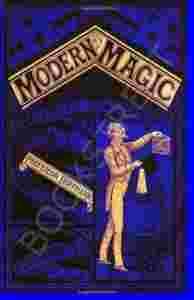|
CONSIDERING the great antiquity and the unfading popularity of the magic art, it seems at first sight a matter of wonder that its literature should be so extremely scanty. In England, in particular, is this the case. Until within the last few years it would have been difficult to name a single book worth reading upon this subject, the whole literature of the art consisting of single chapters in books written for the amusement of youth (which were chiefly remarkable for the unanimity with which each copied, without acknowledgment, from its predecessors), and handbooks sold at the entertainments of various public performers, who took care not to reveal therein any trick which they deemed worthy of performance by themselves. Upon a little consideration, however, the scarcity of treatises on "White Magic" is easily accounted for. The more important secrets of the art have been known but to few, and those few have jealously guarded them, knowing that the more closely they concealed the clue to their mysteries, the more would those mysteries be valued. Indeed, the more noted conjurors of fifty years ago strove to keep the secret of their best tricks not only from the outside world, but from their confreres. At the present day the secrets of the art are not so well kept; and there is hardly a trick performed upon the stage which the amateur may not, at a sufficient expenditure of shillings or guineas, procure at the conjuring depots. There being, therefore, no longer the same strict secrecy, the literature of magic has improved a little, though it still leaves much to be desired. The general ambition of compilers seems to be to produce books containing nominally some fabulous number of tricks. In order to do this, they occupy two-thirds of their space with chemical and arithmetical recreations, and, as a necessary result, the portion devoted to conjuring tricks, properly so called, is treated so briefly and scantily as to be practically useless.
|

